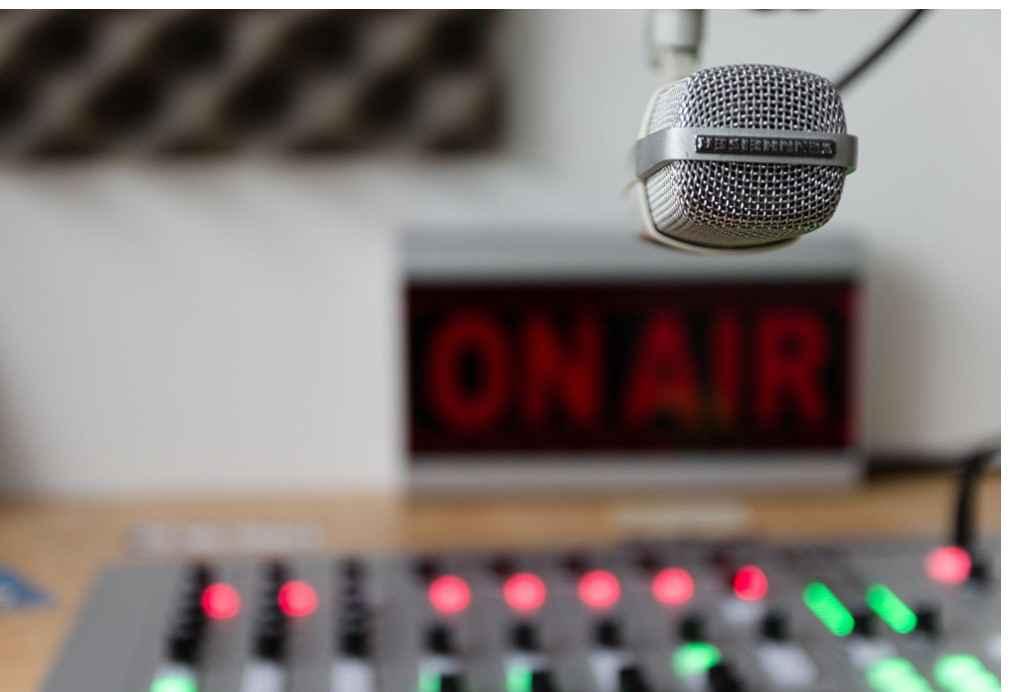SUMMARY: Right now, more than five million podcasts exist. That number grows by two every minute, adding political voices, ASMR soundtracks, movie reviews, comedy routines, true crime stories, and plenty more, to an existing maelstrom of content. We don’t use the ‘m’ word lightly. The world’s podcast library is a loud place to be and a tricky arena in which your branded podcast has to compete. But getting heard doesn’t mean shouting louder than everyone else. Instead, it requires putting yourself in the shoes of your listener, knowing what they want to hear and, just as importantly, what they don’t. Want to know how to make your podcast stand out? Read our five steps here.”
An estimated 23 million people in the UK listen to podcasts each year. Putting the statistic into perspective, that’s almost a third of the country’s entire population, a proportion mirrored in the USA which has approximately 144 million listeners.
In short, podcasts have a big audience.
They’re also big business.
Illustrating that fact, podcasts generated approximately 1.8 billion dollars of ad revenue in 2022, and this year’s figure already looks set to beat that. What, in our eyes, that statistic also shows is the value of the podcasts’ collective reach.
Is it any wonder, then, that brands are racing to incorporate podcast production into their marketing strategies?
You might find yourself in that position.
Having identified a vast untapped audience you want to reach, you’re keen to dive into the world of podcasting with gusto, aplomb, and an abundance of enthusiasm.
But enthusiasm alone doesn’t make a great podcast.
Equipping yourself with only that can cause your content to get lost in the crowd, outnumbered and unheard, relegated to the depths of Spotify and banished to the tundra of Apple Podcasts.
You might, therefore, be wondering how to make your podcast stand out, ensuring its success as a piece – or series – of content that positively contributes towards your brand’s identity.
In response to that musing, we’ve identified five steps you can take. Before we get to them, however, there are a couple of basics that we want to address first.
Let’s get into it.
Table of Contents
How to make your podcast stand out
Recommendations are all well and good, but what do those three podcasts do that are so great? Why are they successful when there are plenty of other branded podcasts that fall by the wayside?
Step one – Identify your audience
Who is the listener that you want to reach?
For BMW that was luxury lifestyle enthusiasts and motorheads who want to get under the bonnet. Identifying those two groups shaped almost every facet of their podcast production efforts, ensuring that they don’t take their foot off the gas when it comes to creating audio that their audience is going to love.
You might do this by analysing your sales demographics, seeing who engages with your social media content the most, or simply having an ideal customer in mind and going with your gut.
Whatever you do, it’s important that you keep that audience in your mind’s eye throughout the process.
Step two – Create a suitable concept
What is the concept that is going to make your podcast stand out?
An answer to that question might be something that nobody else can do. For example, several companies – like Jack Daniel’s – have chosen to take listeners on a journey behind the scenes, allowing them unique access to areas not seen by the general public.
No other podcast can take us through the door in the distillery that says ‘no entry’, so that’s exactly what helps JD’s podcast stand out.
If you are to go down the route of exclusive access podcasts, you should make sure that it’s a behind-the-scenes look that people will want to see. We’re far more likely to be captivated by behind-the-scenes stories about a distillery than a papermill, for example.
Alternatively, you might like to tell the listener a story about a person, place or event, reveal news related to your industry, interview celebrities and experts who are familiar with your chosen subject, or have an informal chat with your hosts about a topic within the wheelhouse of your organisation.
The important thing, when it comes to deciding on a concept, is to tie it into your organisation. After all, at the very least, your listener should know that the branded podcast they’re listening to comes from your brand.

Step three – Find hosts that enhance the content
While big-name celebrities can attract listeners in large numbers (often bringing audiences from their previous projects), it is far better to have a host that connects with both the brand and the listenership authentically.
A podcast covering topics within the world of motor racing might be hosted by a race commentator, former driver, or someone with an infectious passion for driving. On the other hand, if your podcast relates to blues music, it might be hosted by a music journalist, musician, or head of a record label.
To cut a long story short, your host – whoever you choose – should embody the values and tone of your brand, exuding passion for the industry with enough expertise to conduct interviews or discuss subjects with authority.
Step four – Source professional equipment and get professional help
You might have a great concept, an engaging message, or a story that’s told by captivating hosts, but none of that will matter if it sounds like your podcast was recorded in a wind tunnel or at the bottom of a well.
In fact, more than half of listeners will switch off a podcast if the audio is bad. Can you blame them? We all like to be intellectually challenged, but not audibly challenged.
It can take some investment, but using high-spec equipment and recording in a suitable sound studio will certainly pay dividends, allowing your listeners to focus on the content and not the sound quality.
As well as purchasing or hiring professional-standard equipment, you might also entrust the production to podcast professionals. Doing so allows you to focus entirely on what is being said, rather than how it is being presented. Outsourcing the recording and editing of your podcast might increase your costs, but is another investment to consider, one which can enhance the listening experience of your audience.
Step five – Don’t sell
As a collective audience, we don’t like adverts.
One reason why that might be is that according to Forbes, 96% of people don’t think they’re truthful – after all, the person telling you how great a product is is only doing so because they’re getting paid or have some skin in the game.
We connect with adverts (or, more likely don’t connect with adverts) on a different level to the more genuine one on which we connect with podcasts.
As a result, your podcast, whether branded or unbranded, shouldn’t explicitly sell. Sure, sales of BMW have likely increased as a result of their podcast, but it’s not because every episode is one long advert for the latest model. Instead, podcasts build up an audience who are more engaged with the brand, making them more likely to think of the brand when they consider making a purchase.
A branded podcast can make whatever you sell – be it a service or product – feel more valuable. We are far more likely to choose Jack Daniel’s if we know the efforts behind the scenes to make it.
Tell, don’t sell.
FAQ – Will it Be Expensive to Make a Podcast Stand Out?
Recording equipment, editing software, studio hiring costs, and payment for a team of editors, production assistants, managers and PR professionals can – and often is – quite expensive.
But before you move your mouse to the ‘X’ button and shelve your podcast idea, you should know that some excellent podcasts are created with a shoestring budget. At the heart of podcasting, all you really need is a microphone to record the audio, a laptop, tablet or mobile device to upload it onto your chosen platform, and an idea that is unique and valuable to the listener.
Often, that simple setup grows, adapts, changes and evolves as the popularity of your show increases. You might start by dampening the sound with towels and old jumpers – reducing any echoes – but you might find that your budget has increased with the listening figures, allowing you to hire a studio, where the quality is significantly better.
Don’t lose sight of the woods through the trees by focusing too much on the investment. Instead, finesse your concept and build it episode by episode.
Conclusion
The ever-growing world of podcasting can be a daunting place for brands hoping to dip their toe or make a splash.
It can, by its very nature, also be a noisy place.
But there are plenty of ways for you to get your podcast heard. By defining your demographic, choosing a unique concept, enhancing it with captivating hosts, recording it with professional equipment, and making sure that you’re telling not selling, you stand a good chance of building a loyal and dedicated listenership who will feel an affinity with your brand.
About the author:

Phil Caplin is the founder of Broadcast Revolution – a specialist broadcast PR agency providing a fresh and creative way to deliver quality coverage for brands. Services include event filming and live streaming, talent sourcing, media relations, corporate video production, podcast creation, media training, and much more.














